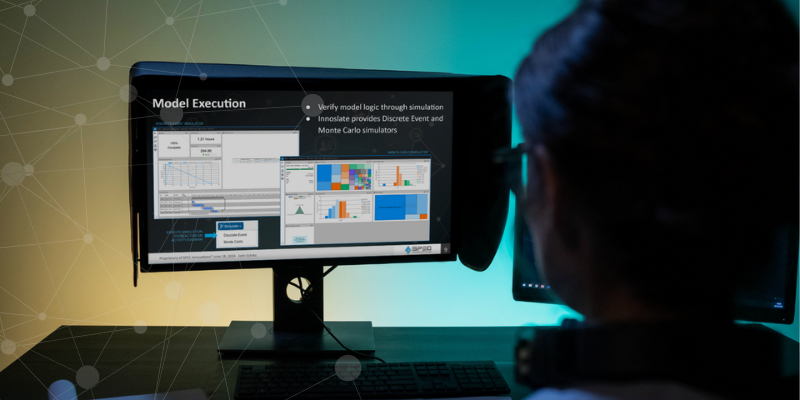Simulate Functional Models Webinar
Not up for reading? Watch our recording instead!
1 min read
Steven Dam
:
7/16/24 11:41 AM

Model-Based Systems Engineering (MBSE) has become a prominent term in the engineering world. The concepts of “modeling” and “simulation” are frequently discussed, but there's a common misconception: equating a model with a set of drawings or a specific drawing. This misunderstanding dilutes the true essence and potential of MBSE.
MBSE originally aimed to capture comprehensive information about a system, presenting this information in various ways to facilitate understanding and articulate detailed specifications or requirements for building the system. The primary goal was to reduce the cost and time required to perform systems engineering, thereby increasing the likelihood of it being executed correctly. The negative impact of neglecting systems engineering is well-documented, emphasizing the need for effective methods like MBSE to enhance efficiency and reduce errors.
For MBSE to be valuable, it must significantly cut costs and time, justifying the expense of tools and training. Tools that merely produce drawings, even if they include a database for reuse, miss the mark. With these tools, each drawing (e.g., a SysML activity model and a sequence diagram) must be created individually. Although an underlying database may help synchronize the information, users still need to manually adjust the diagrams.
A true model-based tool, however, automatically generates the correct diagram. This automation not only saves substantial time during creation but also during updates, validation, and ensuring diagram accuracy. Errors in logic embedded within drawings may remain undiscovered until later stages of the lifecycle, when correcting design errors becomes exceedingly costly.
Another key difference between drawing-based and model-based tools is in capturing a more complete set of information. Most model-based tools boast more comprehensive ontologies (categories of information and their relationships) than typical drawing-based tools. This comprehensive approach enables the creation of more detailed specifications.
For instance, Innoslate® utilizes the Lifecycle Modeling Language (LML), which is designed to capture the necessary information across the entire product lifecycle, including operations and support. Consequently, Innoslate® produces more complete specifications, standard operating procedures, and other critical documentation needed by stakeholders, all at reduced labor and tool costs.
In summary, the distinction between drawings and models in MBSE is crucial. Embracing true model-based tools can lead to significant improvements in efficiency, accuracy, and cost-effectiveness, ultimately enhancing the overall systems engineering process.
Have questions about model-based systems engineering or requirements management? Talk to an expert and see how Innoslate can streamline your projects from start to finish.
.png)
Not up for reading? Watch our recording instead!

In today’s business landscape, organizations are constantly seeking a competitive edge that enhances their efficiency and quality to drive new...

By Dr. Hiren Patel, U.S. Air Force Institute of Technology Data Science and Model-Based Systems Engineering Instructor